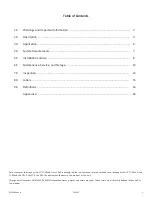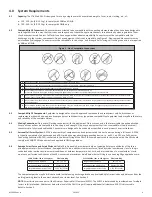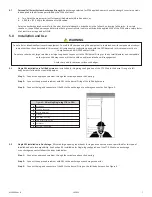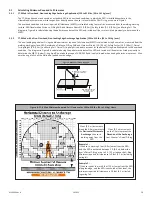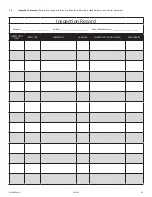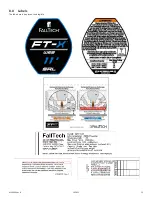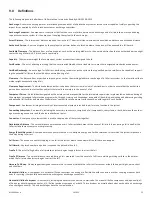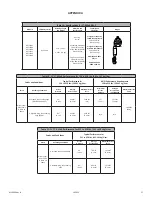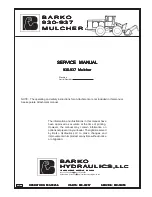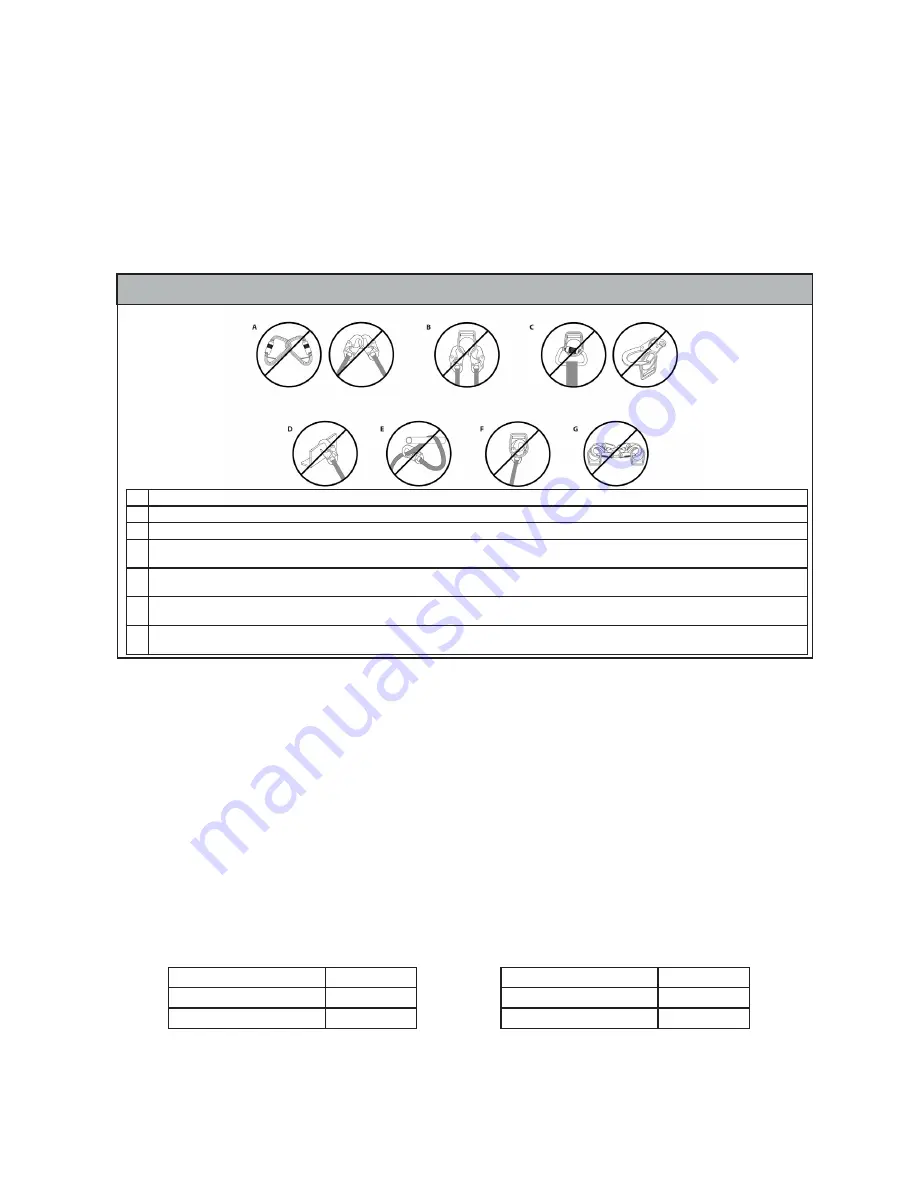
4.0 System Requirements
4.1
Capacity:
The FT-X Web SRL-P is designed for use by a single user with a combined weight of user, tools, clothing, etc., of:
a. 130 - 310 lbs. (59 - 141 kg) to comply with ANSI and OSHA
b. 130 - 420 lbs. (59 - 191 kg) to comply with OSHA only
4.2
Compatibility Of Connectors:
Connectors are considered to be compatible with connecting elements when they have been designed to
work together in such a way that their sizes and shapes do not cause their gate mechanisms to inadvertently open regardless of how
they become oriented. Contact FallTech if you have any questions about compatibility. Connectors must be compatible with the
anchorage or other system components. Do not use equipment that is not compatible, see Figure 2. Non-compatible connectors may
unintentionally disengage. Connectors must be compatible in size, shape, and strength. Self-closing, self-locking connectors are required
by ANSI and OSHA.
4.3
Compatibility Of Components:
Equipment is designed for use with approved components and subsystems only. Substitutions or
replacements made with non-approved components or subsystems may jeopardize compatibility of equipment and may affect the safety
and reliability of the complete system.
4.4
Making Connections:
Only use self-locking connectors with this equipment. Only use connectors that are suitable to each application.
Ensure all connections are compatible in size, shape, and strength. Do not use equipment that is not compatible. Visually ensure all
connectors are fully closed and locked. Connectors are designed to be used only as specified in each product’s user instructions.
4.5
Personal Fall Arrest System:
A PFAS is an assembly of components and subsystems used to arrest a person during a fall event. A PFAS
is typically composed of an anchorage and a FBH, with an energy absorbing connecting device, i.e., an SAL, an SRL, or a Fall Arrester
Connecting Subsystem (FACSS), connected to the dorsal D-ring of the FBH. PFAS components used in conjunction with this SRL should
comply with ANSI Z359 requirements and applicable OSHA regulations.
4.6
Average Arrest Force and Arrest Distance:
Table 1B in Appendix A provide test data on typical performance attributes of the three
principal parameters: Arrest Distance, Average Arrest Force, and Maximum Arrest Force, listed by model number and class. Testing is
conducted under various environmental conditions, at ambient temperature, hot, cold, and wet conditions. In manufacturer’s tests,
worst case performance attributes of the SRL, connected at maximum tie-off below dorsal D-ring in non-Leading Edge applications are:
A
Never connect two active components (snap hooks or carabiners) to each other.
B
Never connect two active components (snap hooks or carabiners) to a single D-ring at the same time.
C
Never connect in a way that would produce a condition of loading on the gate.
D
Never attach to an object in a manner whereby the gate (of the snap hook or carabiner) would be
prevented from fully closing and locking. Always guard against false connections by visually inspecting for closure and lock.
E
Never attach explicitly to a constituent subcomponent (webbing, cable or rope) unless specifically provided for by the manufacturer’s instructions for both
subcomponents (snap hook or carabiner and webbing, cable, or rope).
F
Never attach in a manner where an element of the connector (gate or release lever) may become caught on the anchor thereby producing additional risk of
false engagement.
G
Never attach a spreader snap hook to two side/positioning D-rings in a manner whereby the D-rings will engage the gates; the gates on a spreader must
always be facing away from the D-rings during work positioning.
Figure 2 - Non-Compatible Connections
The competent person may find this data useful with planning anchorage location and calculating fall arrest loads and distances from the
walking/working level to the nearest obstruction or lower level. See Section 5.
NOTE:
Arrest distance is one part of the Minimum Required Fall Clearance (MRFC). The MRFC is determined by consideration of multiple
factors in fall protection. Attachment below the level of the FBH D-ring will require additional fall clearance. MRFC is discussed in
detail in Section 5.
102022
MSRD26 Rev B
6
Longest Arrest Distance
81” (2.1 m)
Largest Average Arrest Force
933 lbs (4.2 kN)
Largest Maximum Arrest Force
1,235 lbs (5.5 kN)
5' Below D-Ring
Longest Arrest Distance
85" (2.2 m)
Largest Average Arrest Force
884 lbs (3.9 kN)
Largest Maximum Arrest Force
1,375 lbs (6.1 kN)
130 to 310 lbs. (59 to 141 kg) user
311 to 420 lbs. (141 to 191 kg) user 3' Below D-Ring


